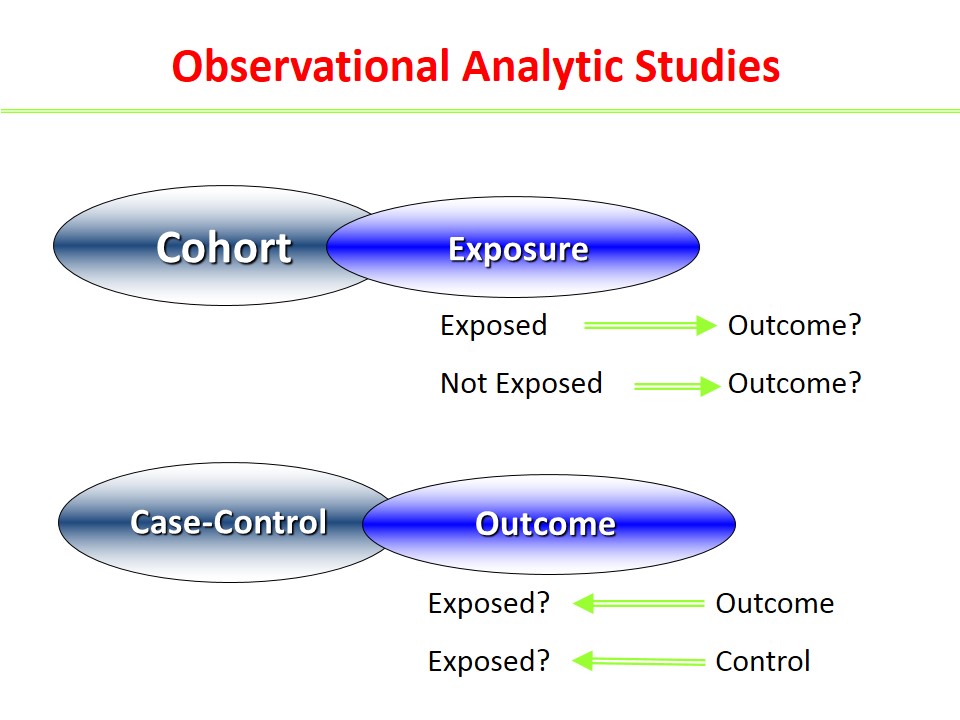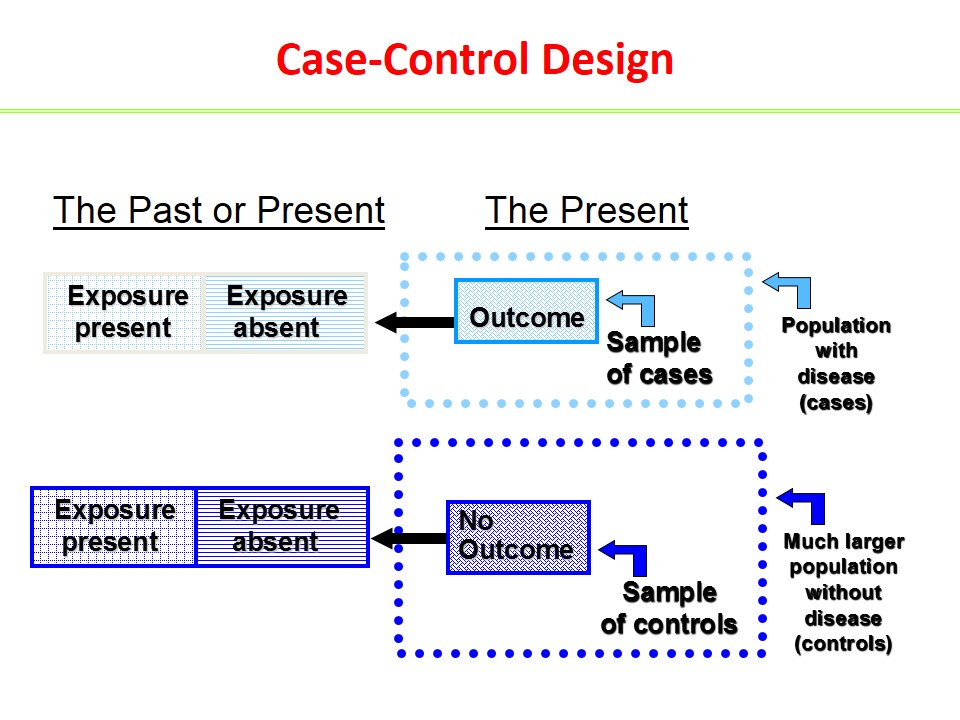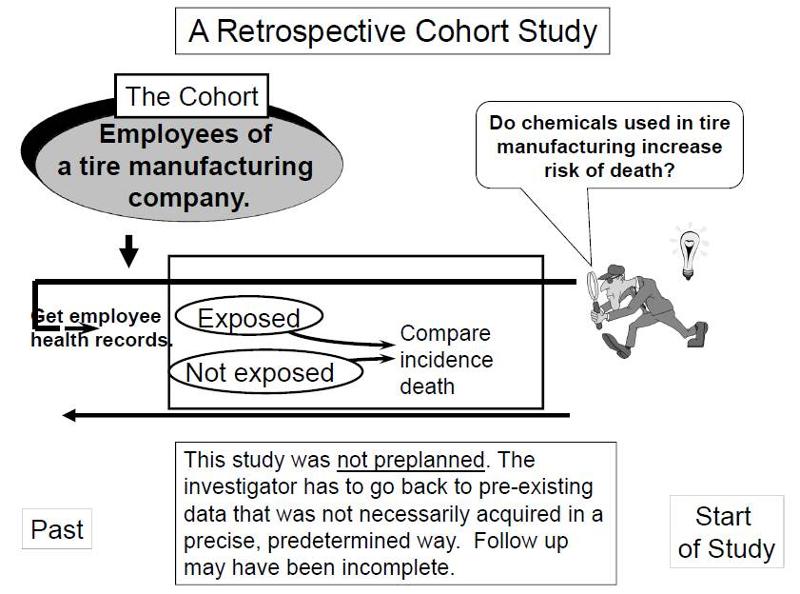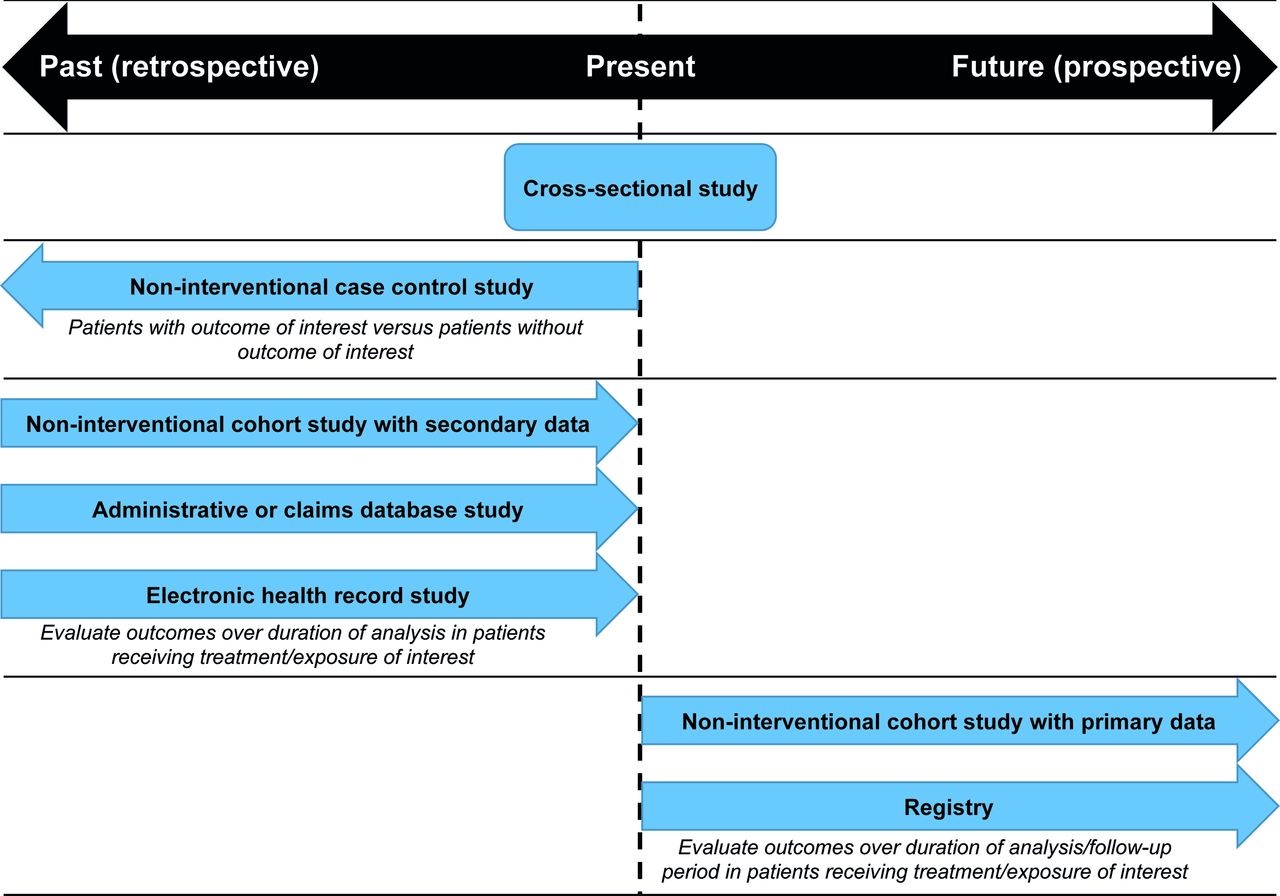

Important things to consider in appraising cohort studies include whether or not there is any indication of selection bias or confounding in the case of retrospective cohort studies, whether or not there is likely to be significant recall bias (that is, whether the investigator is able to reliably determine previous exposure to factor of interest for both cases and controls), and in the case of prospective cohort studies, whether or not there is likely to be significant withdrawal bias (that is, where a significant number of participants have been lost to follow-up). Although they do not allow for the random allocation of study participants to receive or not receive the exposure of interest, they do allow for random sampling from the source population which can minimise some sources of selection bias and confounding. Prospective cohort study (concurrent cohort study or longitudinal study): Subjects have been followed up for a period and the outcomes of interest are recorded.

Usually a cohort is a defined group of people without regard to disease status, whereas a "case" has a specific disease status and controls are deliberately assigned versus just happening to be from the same cohort.Cohort studies are generally considered to be the most reliable observational study design and are particularly useful for examining the effects of harmful exposures. Cause and Effects of Diseases Moreover, case-control studies usually proceed from the effects of a disease to its cause, while cohort studies proceed from the cause of a disease to its effects. Case control refers to a study design where you select subjects based primarily on whether or not they've experienced a particular outcome. In retrospective studies, the data have already been collected before the study begins. Then gather exposure data for cases and controls and compare it to see if there are statistically significant differences. Case-control studies are retrospective, while cohort studies can be either prospective or retrospective. Retrospective refers to the temporal relationship between the data collection and the beginning of the study. Case-control studies are retrospective, cases are identified at the beginning of the. The controls could be people of similar demographics like age, gender, or location where they live. Cost-effective relative to other analytical studies such as cohort studies. You can compare the exposed/unexposed groups with the cancer/no cancer outcomes.Ĭase control takes cases of disease (so people who have lung cancer) and assigns one or more controls to each case. For example, if you took a group of workers who worked at a company for a specific period of time and got information about whether they ever developed lung cancer, then you looked back in time for exposure data (from air sampling, modeling, etc.) to see if they were ever exposed to a specific chemical that causes lung cancer. I'll put it in terms of what I know, which is occupational health.Ī retrospective cohort study takes a group of people and "follows" them into the past. It can be very exciting to think that we may have noticed something that no one else has noticed.

You begin to backtrack to try to find the source or common element of the infection. There are others from the same area that are not infected. You have patients that are sick with a new disease. The difference between a retrospective case series and a retrospective case-control is that the case series lacks a control. Case-control studies are retrospective in nature. They then look back retrospectively to try and find associations between the patients. In case of rare outcomes, the follow-up period may be very long (sometimes we will be waiting years. For example, a physician might encounter a series of patients who all have the same disease. Cases confirmed to have been exposed to the agent under questions are factored into the calculation of the odds ratio, or the ratio between the odds of being exposed to the agent under questions between the case group and control group. In a cohort study we need to wait for the outcome to occur. It then follows the subjects through time and counts incident subjects displaying the outcome/disease in question.Ī case control study finds cases, individuals who already have the disease/outcome in question, then evaluates their past exposures and compares them to a carefully selected group of controls.

Retrospective cohorts utilize available information, such as medical records, and defined point in time in the past for follow up to begin, approximately when exposure could have occurred. Subjects with the desired outcome are used to calculate the relative risk/incidence of newly occurring cases of disease/outcome over a defined period of time. Cohort studies focus on an exposure, and follows a defined cohort through time. The major difference between the two designs is one focuses on outcome while other focuses on exposure.


 0 kommentar(er)
0 kommentar(er)
